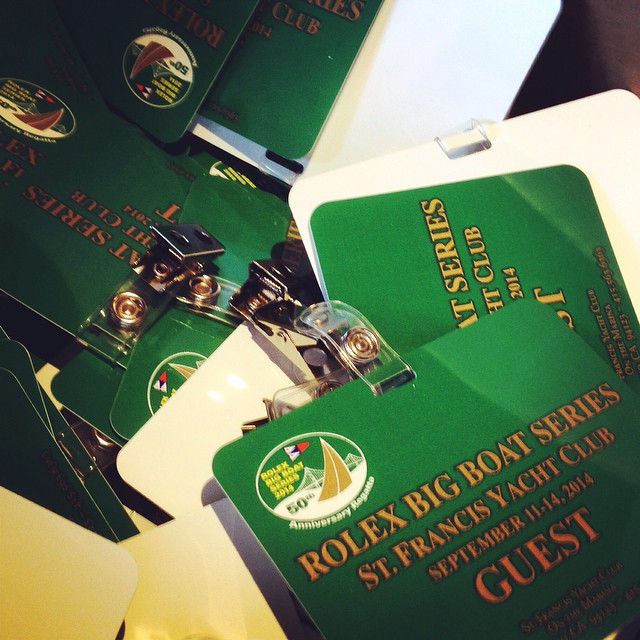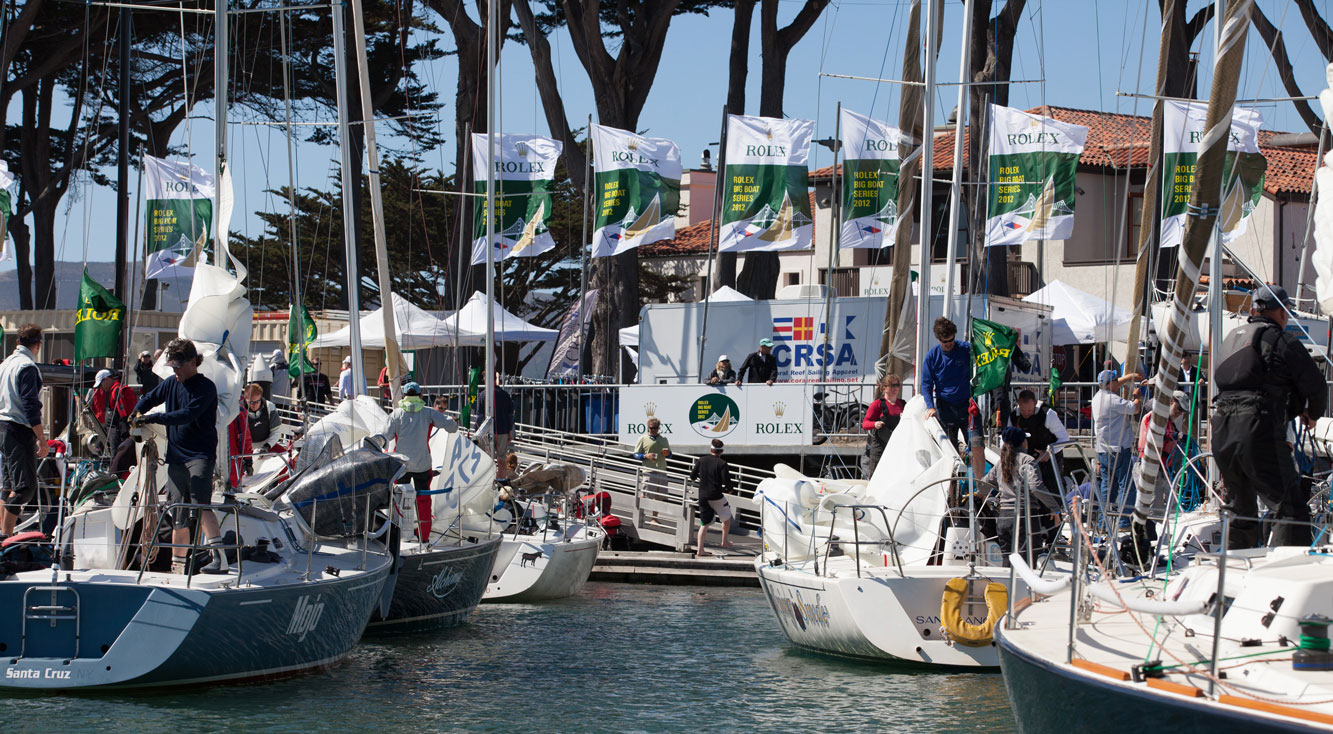By: Lynn Lynch, St. Francis Yacht Club Race Director
Throughout my career in sailing race management, one of the best parts has been witnessing the behind-the-scenes operations that go into running complex regattas. Every event has its own specific aura and its own set of challenges and rewards. When I worked at Chicago Yacht Club, the Race to Mackinac presented a slew of hurdles. Namely: how do you get 300 boats safely across 333 nautical miles of Lake Michigan from Chicago to an island with no cars, spotty power, a harbor built for 60 boats, and finishes that occur 24 hours a day for multiple days? Or, at the Sailing World Cup Miami: how do you organize men, women and disabled sailors competing in 14 different classes over 7 different race courses, 90% of whom are sailing in dinghies that have to be launched and retrieved each day…at the same time?
Now, as Race Director at the St. Francis Yacht Club, I’ve learned that the Rolex Big Boat Series (RBBS) is equally capable of presenting its own unique hurdles. From dodging 1,000+ foot container ships to sending 10 classes on different Bay tours without running them into each other, it regularly provides excitement for the organizers.
The secret to any successful event is planning. That is something St. Francis has perfected. Within weeks of the conclusion of one RBBS, the planning commences for the next. There are the obvious tasks that the committee handles: fleet outreach and recruitment, course development, party planning, media relations, race committee volunteers, international jury organization, trophies. And there are the logistical tasks that the Race Department handles: permits, dockage, support boats.
 Then, there are the behind-the-scenes tasks you might not know are happening. Volunteers laminate bag tags, attach lanyards to crew badges and pack 100 skipper bags. On the docks, they greet arriving boats, direct them to their slips and apply bow stickers. The Front Desk hands out guest cards. The kitchen is all-hands-on-deck prepping the week’s food. Support trailers fill the parking lot. Media descends to set up camp, cameras, TVs, drones. Coral Reef Apparel builds a pop-up merchandise store. Rolex representatives deck out the club in sponsor colors and decorations. At the regatta entrance of the Club, the red carpet gets rolled out—literally—to welcome sailors and guests.
Then, there are the behind-the-scenes tasks you might not know are happening. Volunteers laminate bag tags, attach lanyards to crew badges and pack 100 skipper bags. On the docks, they greet arriving boats, direct them to their slips and apply bow stickers. The Front Desk hands out guest cards. The kitchen is all-hands-on-deck prepping the week’s food. Support trailers fill the parking lot. Media descends to set up camp, cameras, TVs, drones. Coral Reef Apparel builds a pop-up merchandise store. Rolex representatives deck out the club in sponsor colors and decorations. At the regatta entrance of the Club, the red carpet gets rolled out—literally—to welcome sailors and guests.
One of the biggest tasks is dividing the boats up into sections to compete for the coveted Rolex timepieces. There are a lot of facets that influence these much-anticipated section breaks. We start with the ratings themselves and then consider additional research about boat type, race history and fleet preference. The final decisions come only after extensive consideration and reconsideration. Finally, at the Commodore’s Reception following the skippers’ meeting, the sections are revealed. And it’s off to the races.
The first boats on the water on Thursday are Race Committee volunteers, who set marks for two race courses. Throughout each day, there are no fewer than 60 volunteers and 10 support boats on the water. While many regattas stick to windward-leeward courses using dropped marks, RBBS runs windward-leeward courses in the mornings using a combination of dropped and fixed marks, and long-distance Bay tour courses in the afternoons. These courses are laid out and analyzed months in advance so that when the day arrives everyone knows where they need to be and when.
In addition to making the courses challenging for the sailors, we have to think about the spectators. That’s why, every afternoon, all classes finish just off of the Race Deck at the same time. As a spectator, you might be thinking about how cool it is that 100 boats are converging under spinnaker along the City Front. As a Race Director, I’m thinking about how many individuals it takes to make that moment occur: the dockmaster who splashed the boats, the Race Committee volunteer who ran the starting sequence, the bartender who poured your drink, the journalist who captured the photo finish, the race coordinator who recorded the finishes. I could go on. I don’t recommend thinking about it for too long; it will make your head spin.
 For many sailors and spectators, the day ends when the finish gun gets fired. For many of us, the day is just beginning. The team of international judges steps up to the plate to handle the day’s protests and redress requests while the race office, PROs and event chair handle administration issues, breakdowns, equipment failures and scoring. It is not unusual for these post-race activities to keep us busy well into the night.
For many sailors and spectators, the day ends when the finish gun gets fired. For many of us, the day is just beginning. The team of international judges steps up to the plate to handle the day’s protests and redress requests while the race office, PROs and event chair handle administration issues, breakdowns, equipment failures and scoring. It is not unusual for these post-race activities to keep us busy well into the night.
Come Sunday afternoon, a year of hard work comes to a close at the awards ceremony, where trophies and Rolex timepieces are presented to deserving sailors. The winners and runner-ups come together to celebrate and spin yarns. The volunteers are often as exhausted as the competitors, but everyone—hopefully—is satisfied.
Over the next few days, borrowed boats are returned, equipment is stowed away, Rolex gear is packed up, decorations are taken down. Another event is in the books.
And we start planning for the next one.
And that, ladies and gentlemen, is how you run a Big Boat Series. That, plus or minus a thousand other little things. As with all the other events I have been a part of, at the end of the day the greatest satisfaction comes from having achieved something with a group of people who worked so hard toward the same goal. I can’t tell you who won the Race to Mackinac in 2010 but I can tell you who was on my docking squad that year and what our funniest moment was. And in the wee hours after a long race day when we are switching equipment from a broken boat to a replacement, that is what keeps you going and reminds you how lucky you are to be a part of it all.






